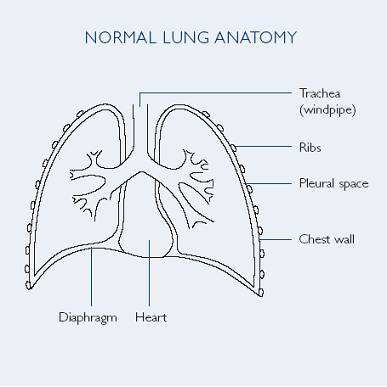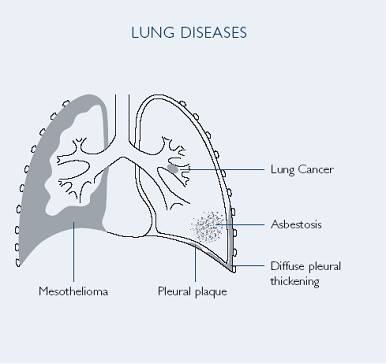Chapter 1 - Introduction
Terms of reference
1.1
On 22 June
2005 the Senate referred the following matters to the Community
Affairs References Committee for inquiry and report by 1 December 2005:
- the health impacts of workplace exposure to toxic dust
including exposure to silica in sandblasting and other occupations;
- the adequacy and timeliness of regulation governing
workplace exposure, safety precautions and the effectiveness of techniques used
to assess airborne dust concentrations and toxicity;
- the extent to which employers and employees are informed
of the risk of workplace dust inhalation;
- the availability of accurate diagnoses and medical
services for those affected and the financial and social burden of such
conditions;
- the availability of accurate records on the nature and
extent of illness, disability and death, diagnosis, morbidity and treatment;
- access to compensation, limitations in seeking legal
redress and alternative models of financial support for affected individuals
and their families; and
- the potential of emerging technologies, including
nanoparticles, to result in workplace related harm.
1.2
The reporting date was subsequently extended by the
Senate to 31 May 2006.
Conduct of the inquiry
1.3
The inquiry was advertised through the Internet, The Australian and regional newspapers: Whyalla News; Illawarra Mercury; North West
Telegraph (WA); Newcastle Herald;
Katherine Times; Kalgoorlie Miner; Transcontinental
(SA); Maitland Mercury; Mt Isa North West Star; La Trobe Valley Express; and Moe and Narracan News (Yallourn). The
Committee wrote to interested individuals and groups inviting submissions. The
Committee received 46 public submissions and 2 confidential submissions from
a range of organisations, individuals and Commonwealth and State Government
bodies. A list of individuals and organisations who made public submissions is
at Appendix 1.
1.4
The Committee held public hearings in Melbourne,
Sydney and Canberra.
A list of witnesses who gave evidence at the public hearings is at Appendix 2.
Background to the inquiry
1.5
The Committee's interest in workplace exposure to toxic
dust arose from the case of Mr Richard
White who was employed between 1971 and 1974
in the sandblasting industry in the Northern Territory.
Mr White
subsequently developed lung disease. He initiated a compensation claim in the
Northern Territory Supreme Court in 1998 and alleged that as result of his
employment, he had developed silicosis and/or emphysema and/or chronic air flow
limitation. Mr White
lost the first instance trial, the subsequent appeal to the Supreme Court of
the Northern Territory and an
appeal to the High Court of Australia.[1]
1.6
Following the unsuccessful litigation, Mr
White placed a newspaper advertisement
requesting people who knew or suspected that they had acquired lung or other
disease through working for companies that used sandblasting techniques to
contact him. By Christmas 2004, Mr White
had obtained 916 names. Many of the respondents to the advertisement claimed to
have experienced symptoms consistent with lung disease or cancer related to
workplace exposure to toxic dust. It appeared that very few had received or
sought compensation for their disability.
1.7
Mr White
believed that 'many other Australians have suffered potentially harmful
exposure to toxic dust, without ever seeking more specific diagnosis or
financial compensation'.[2] Mr White and
Dr Thomas Faunce, Senior Lecturer at the Medical School and Law Faculty,
Australian National University, lobbied for the establishment of an inquiry
into workplace risks of exposure to toxic dust.
Impact of exposure to toxic dust
1.8
There are many substances in dust form which lead to
health problems for workers. The following provides an overview of some diseases
arising from workplace exposure to toxic dusts:
-
Asbestosis: Asbestosis is scarring of the lungs
due to asbestos exposure;
-
Asbestos Related Pleural Disease (ARPD);
-
Mesothelioma: cancer of the pleura and the
peritoneal lining. It is an invasive tumour related almost exclusively to
asbestos exposure;
-
Lung cancer: may result from exposure to asbestos
or silica;
-
Silicosis: caused by exposure to crystalline
silica dust;
-
Silicotuberculosis: the most common complication
of silicosis;
-
Mushroom Worker's Lung: caused by the inhalation
of microbial spores living in the compost used to cultivate mushrooms;
-
Bagassosis: caused by mouldy bagasse, which is
the fibrous cellulose residue of sugar cane after the extraction of juice. This
disease is uncommon;
-
Farmer's Lung: caused by exposure to mouldy hay,
straw or grain;
-
Bird Fancier's Lung: caused by exposure to bird
excreta and bloom;
-
Byssinosis: airways disease due to the
inhalation of certain textile dusts;
-
Siderosis: caused by the long-term inhalation of
iron oxide fumes;
-
Aluminosis: seen in workers exposed to fine
aluminium powder or dust;
-
Berylliosis: an inflammatory disease of the lung
caused by the inhalation of dust or fumes containing beryllium;
-
Hard Metal Pneumoconiosis: the consequence of
the inhalation of cobalt containing dust, either in the manufacture of hard metals
or the sharpening of tools made from hard metals;
-
Coal Dust Pneumoconiosis: caused by the
inhalation and retention of coal dust in the lungs;
-
Hexavalent Chromium associated lung cancer; and
-
Occupational Asthma: an inflammatory disorder of
the lungs resulting from a hypersensitive reaction to an inhaled foreign
substance. It is the most common occupational lung disease in Australia.[3]
1.9
The most commonly known dust which causes harm is
asbestos. Asbestos was mined in Australia
principally at Wittenoom (Western Australia)
from 1940 to 1966 and at Baryulgil and Barraba. The use of all forms of
asbestos was banned in Australia
from 31 December 2003,
except in prescribed circumstances.
1.10
The fibres of asbestos cause asbestosis, lung cancer,
asbestos-related pleural diseases and mesothelioma. Claims for asbestos
compensation are not limited to the mining of asbestos; many claims arise from
use of asbestos products. Estimates of Australia's
total liability for future asbestos claims start at around $6 billion.[4]
1.11
The case of asbestos is well documented and mechanisms
are now in place to manage asbestos related compensation claims. Therefore the
Committee has not addressed the specific issue of asbestos in this report
rather it has reviewed workplace exposure to other toxic dusts including silica
dust, beryllium and timber dust.
1.12
The following two diagrams show healthy lungs and the
impact of lung diseases:


Source: A Guide to Compensated Occupational
Lung Disease in NSW, Dust
Diseases Board of NSW, viewed at http://www.ddb.nsw.gov.au/home.asp
Australian Safety and Compensation Council (ASCC)
1.13
During the course of the Committee's inquiry, the
Australian Safety and Compensation Council was established as a national advisory
council on occupational health and safety (OHS) and workers' compensation. It
had its first meeting in October 2005. The ASCC succeeded the National
Occupational Health and Safety Commission (NOHSC). Like its predecessor, the
ASCC comprises representatives from Federal, State and Territory Governments,
the Australian Council of Trade Unions and the Australian Chamber of Commerce
and Industry.
1.14
The key role of the ASCC is to provide leadership and
coordination for national efforts to prevent workplace death, injury and
disease. The ASCC will lead and monitor research and develop broad OHS and
workers' compensation policy and strategic directions under the guidance of the
Workplace Relations Ministers' Council. The work of the ASCC is aimed at
achieving national consistency in OHS and workers compensation. It also has the
power to declare national standards and codes of practice, as was the case with
NOHSC documents developed as the basis for nationally consistent OHS
regulations.
1.15
The Office of the Australian Safety and Compensation
Council (OASCC), based in the Department of Employment and Workplace Relations,
will support the work of the ASCC and is also a source of national research and
statistical information relating to OHS and workers’ compensation.[5]
1.16
As most submissions were written before the ASCC was
established, the Committee has used NOHSC in the text rather than ASCC.
Navigation: Previous Page | Contents | Next Page